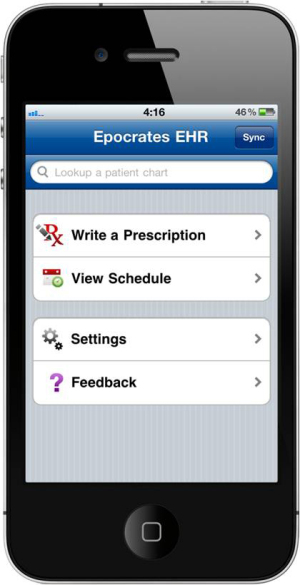ONC releases draft of Health IT Patient Safety Plan
by
Carol Ko, Staff Writer | January 07, 2013

ONC patient safety plan
recommendations include user-centered design
for medication
The Office of the National Coordinator for Health IT has released a draft plan outlining ways EHR vendors can improve patient safety moving forward. The ONC is accepting public input on the draft plan through Feb. 4th.
Jodi Daniel, director of Office of Policy and Planning, said that the plan focuses on the broader role health IT plays in patient safety. Daniel said, "We think there's a significant upside potential for technology to dramatically improve patient safety and reduce medical errors." But, Daniel added, they also want to understand areas where health IT may adversely affect patient safety. "Using this information, we can help give vendors best practices for implementation and product improvement and provide tools to mitigate risks," she said.
The drafted plan provides a list of recommendations for vendors to adopt, including establishing an online forum, an IT safety panel, a code of conduct that would hold health IT developers accountable, voluntary reporting of safety errors from the vendors themselves, and increased surveillance and testing using the ONC's accrediting bodies.
The plan also calls for safety requirements to be incorporated into the new meaningful use program instated as part of Obama's health care reform law. Daniel said, "We have put in some provisions that we think will help improve safety, particularly requiring user-centered design for medication-related functionality, which early indications show might be the area that might benefit most from risk mitigation. So we've built that into our certification program as a requirement for the vendors."
However, Daniel acknowledged that there is relatively little data available on health IT safety errors. "There is some limited understanding about whether health IT may or may not have an impact on safety events — that's some of the things we've calling for," she said. Thus far, findings in the Institution of Medicine report show that health information systems were involved in less than 1 percent of reported errors. The Pennsylvania Patient Safety Authority recently released a notice indicating that 3,900 out of 1.7 million reported cases of error were involved with EHR.
Addressing this lack of transparency, the plan calls upon vendors to voluntarily report safety errors so the ONC can more accurately measure the frequency of health IT safety events and note any patterns in those events that they can use to determine better strategies for improving safety. Without widespread cooperation and participation of EHR vendors, the ONC may ultimately step in to provide more formal oversight in the future.
According to Daniel, the ONC is currently following the Institute of Medicine's recommendation not to start off with a regulatory approach for oversight of EHR. Daniel said, "We've specifically called on vendors to accept responsibility in a public way and take action aligned with that. However, [the Institute of Medicine] said to prepare ourselves to regulate if the measures don't work." She added, "We want to make this work."
Moving forward, Daniel said, further action from the ONC will depend on how vendors react to the recommendations outlined in the plan. "This is a two-year plan, so we will be monitoring and evaluating progress against it and making adjustments as we go forth," said Daniel.
|
|
|
You Must Be Logged In To Post A Comment
|
